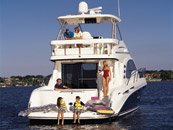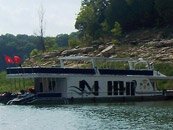Time to learn some more nautical-speak—the bathroom on a boat is called the head, the toilet on a boat is also called the head.
The head facilities on a boat range from simple to super. On one end of the spectrum, you can take a five-gallon plastic bucket, put a trash bag inside and a toilet seat on top—and you have an inexpensive, portable head.
However, most of us prefer something a bit more substantial to facilitate taking care of life’s necessities. That’s where self-contained, portable toilets enter the picture. These consist of a small toilet body resting on top of a detachable holding container. When the container’s full, take it ashore and dump it into a ‘real’ toilet.
Permanent head installations require plumbing, and usually a large holding tank to store the waste. A permanent head can be manually operated with a lever, or you can flush an electric head by depressing a foot pedal or switch button. After leaving the toilet bowl, waste usually passes through a macerator that grinds/chops/purees it into a near liquid state.
As far as removing waste/sewage from your boat, you can store it in a holding tank and remove the contents at a pump out station on shore. If you’re over three miles offshore, you may simply choose to pump the waste product overboard into the sea.
Within the three-mile limit, strict laws dictate that marine sewage is properly treated on board by a type I or II Marine Sanitation Device (MSD) before pumping the waste overboard.
On inland waters, dumping marine waste into the water is forbidden, so don’t even think about it—use your holding tanks until you get back to the marina.

